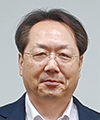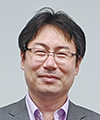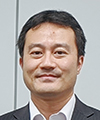 |
|||
|
|
|||
|
NTT Technology Report for Smart World Vol. 18, No. 8, pp. 7–10, Aug. 2020. https://doi.org/10.53829/ntr202008sw1 Publication of NTT Technology Report for Smart World 2020AbstractNTT Research and Development Planning Department annually releases NTT Technology Report for Smart World, which presents 11 technologies that will transform technology into a natural presence and make the world smarter, and other leading-edge activities of NTT. It has now published the 2020 edition with new information added. This article presents an overview and the main updated points of the report. Keywords: technology trend, social trend, smart world 1. For Smart World and Natural TechnologiesThe first edition of NTT Technology Report for Smart World was released in May 2019. It has been widely distributed both in hard-copy and as a download. It introduced 11 technologies that will make the world smarter and more natural. We have updated the technology report for the edition 2020 to reflect changes in technology trends and the progress in NTT’s research and development (R&D) activities over the last year. Artificial intelligence is now in practical use in many services. Such new technologies are bringing about dramatic changes in our living environment, such as the emergence of unmanned stores and automated driving, and digital transformation of business operations. The novel coronavirus, which has spread around the world in the last several months, is posing a great challenge to long-established economic and social systems and to connections between people. As exemplified by remote working and distance learning, information and communication technology (ICT) and communication networks are playing a significant role in supporting humanity’s resilience. Looking to the future, it is essential to achieve breakthroughs in solving energy problems and developing innovative medical, materials, and manufacturing technologies. However, we cannot discuss using such technologies without considering their implication for cyber security and privacy protection. The new edition of the technical report reviews the 11 technologies presented in last year’s edition and introduces the latest technical trends and progress in NTT’s R&D activities. It also explains the specific configuration and research roadmap of the Innovative Optical and Wireless Network (IOWN) and touches on the establishment of a global forum for IOWN. 2. Eleven Technologies to Update the Smart WorldWe are focusing our R&D efforts on 11 technologies that will transform technology into a natural presence and make the world smarter. From technologies that are already being implemented to promising technologies that are still in their infancy, we introduce how these 11 technologies will help to build the Smart World. 1. Artificial IntelligenceProgress in deep learning has made artificial intelligence (AI) the hottest topic of recent years. Its performance is already higher than that of humans when it comes to making classifications or judgements based on learning a large volume of data. What is required in the future is technology that operates based on an understanding of what is deep inside humans, such as emotion. In using AI, it will be necessary to consider people’s worldviews and ethics. We are exploring the humanities in collaboration with Kyoto University with an aim of developing AI that deeply understands and coexists with humans. 2. Virtual Reality / Augmented RealityVirtual reality (VR) has long been used in games. Attention is now focused on new applications such as elderly care that uses VR to simulate excursions. In the future, VR and augmented reality (AR) will make its way into every facet of human life. Once the real world and cyberspace are integrated and people can seamlessly move back and forth between the two, VR/AR technology will play an even more important role. In the future, it will be necessary to provide people with feedback by reproducing the five senses and by digitizing and modelling people, objects, and environments in real time through more advanced sensing and information gathering in the real world. Achieving this in a natural way that does not burden people is a significant research challenge. 3. Human-Machine InterfaceThe range of uses for human-machine interface (HMI) will expand dramatically in environments where the real world and cyberspace are closely intertwined. The concept of “ambience” will be important as this field evolves. We are focusing on technology that unobtrusively presents information, and technology that uses information imperceptible to humans to provide natural support from the surrounding environment without hindering people’s activities. To expand human activities in the real world, we will address challenges including how to maximize human motor function. 4. Cyber SecurityThe risks to network security from threats such as cybercrime and cyberterrorism are dramatically increasing. As the real world connects more closely with cyberspace, attacks on cyberspace are likely to result in substantial real-world impacts. To address these risks, we are developing technology that minimizes security damage while solving the issue of growing security-related operational costs. Furthermore, we are pushing forward on research to create better systems and norms by encouraging the inclusion of language consistent with technology in laws, and on a wide range of activities for building communities and developing human resources in the cybersecurity field. 5. Information Processing InfrastructureWe anticipate system control based on information from video and a variety of other sensors to enable optimal behavior selection and future prediction that exceeds human capabilities in a range of fields. However, as we work to establish a sustainable society, we are confronted with a number of issues, such as abrupt changes in the requirements for data processing and high levels of power consumption. Using data-centric information processing infrastructure and optical technology, we are striving to exceed the limits of existing infrastructure and create technology that can process enormous amounts of data from the real world at low latency. We are calling this approach “phygital data-centric computing.” 6. NetworksIt goes without saying that networks form the foundation of the Smart World. While attention has focused in recent years on network virtualization and decentralized networks, conventional networks based on electronic processing technology are approaching their limits. To address this problem, we are shifting to photonics-based technology to create networks that can address current challenges and achieve low energy consumption, high quality, large capacity, and low latency. Moreover, we are rapidly expanding the scope of network connections, including via satellite communication utilizing MIMO (multiple-input and multiple-output) and conducted in collaboration with JAXA, as well as undersea communications. 7. EnergyIn an era when companies around the world are striving to achieve sustainable development goals and people’s environmental awareness is rapidly changing, major breakthroughs are needed in research and development in the energy field. We are developing technology for using renewable energy efficiently and reliably by merging our power system and network technologies. We are also working to develop communication equipment that can operate with micro-energy. In addition, we are embarking on harnessing innovative energy sources, including fusion power, space solar power, and lightning charging, all of which are long-cherished dreams of humankind. 8. Quantum ComputingQuantum computing technology, known for its vastly greater power than conventional computers, is anticipated to be introduced in nearly every industry. Companies in the U.S., Europe, China, and elsewhere are pushing ahead with development of their own computers. To develop innovative computing technologies, we are taking a number of approaches to next-generation information processing: from von-Neumann-type post-Moore computing, and non-von-Neumann-type post-Moore computing to rapid and efficient quantum information processing based on new principles, looking beyond even post-Moore technology. 9. Biotechnology / Medical CareBiomedical technology is no longer developed solely within biology, chemistry, or medicine. As the real world and cyberspace increasingly merge together, the scope of biomedical technology will also expand. An example is precision medicine and personalized medicine that is realized through the integration of ICT and AI. We are aiming to realize natural, data-driven medicine and healthcare. For this purpose, we are using AI to predict potential disease risks and to elucidate the mechanisms of disease, and developing high-precision, real-time biomonitoring technologies and new materials that blend naturally into the living body. Through such a multi-faceted approach, we will open a promising path toward a prosperous future for biotechnology and medical care. 10. Advanced MaterialsCompanies around the world are pouring resources into the pursuit of advanced materials. Examples include ultrafine materials, nanomaterials, multi-functional materials, and environment-adjustable materials, all of which are key to next-generation biotechnology and memory technology. We have established three overall strategic directions: (1) devices that help reduce power consumption and latency in optical communication, (2) materials that make people feel natural and creative, and (3) materials and devices with emergent novel functions. The development of advanced materials will continue in tandem with other technologies. 11. Additive ManufacturingThe term additive manufacturing likely brings 3D printers to mind, but today the meaning of manufacturing is broader than ever before. We believe that the future will bring three changes: the personalization of biomedical devices, the maturation of photonics-electronics convergence devices, and the realization of unrivaled manufacturing technology at the nano scale. We will push ahead with the creation of artificial body systems, the manufacturing of advanced, complex photonics-electronics convergence devices, and the development of nano-level manufacturing technologies, including those that will make it possible to control arrays of atoms in three dimensions and those that will enable direct manipulation of atoms. 3. IOWN is the Platform for Our FutureLast year, we announced our vision for a new communication infrastructure known as IOWN to shift from electronics to photonics and develop “natural” technologies that go beyond the limit of today’s digital technology. IOWN is composed of three main elements: (1) the All-Photonics Network (APN), which employs photonics-based technology for everything from networks to terminals; (2) Cognitive Foundation® (CF), which connects and controls everything; and (3) Digital Twin Computing (DTC), which enables future prediction by integrating the real and digital worlds. In October 2019, we joined with partners Intel and Sony to announce the establishment of the IOWN Global Forum. Through this framework, we are pressing ahead with R&D with global partners. We also released our IOWN technology development roadmap in April 2020. This roadmap is also explained in the technology report. 4. ConclusionNTT Research and Development Planning Department will continue to annually release a summary of technology trends, and the strategies and activities of NTT R&D. The document released and summarized above is presented on the NTT R&D website [1]. Reference
|
|||



